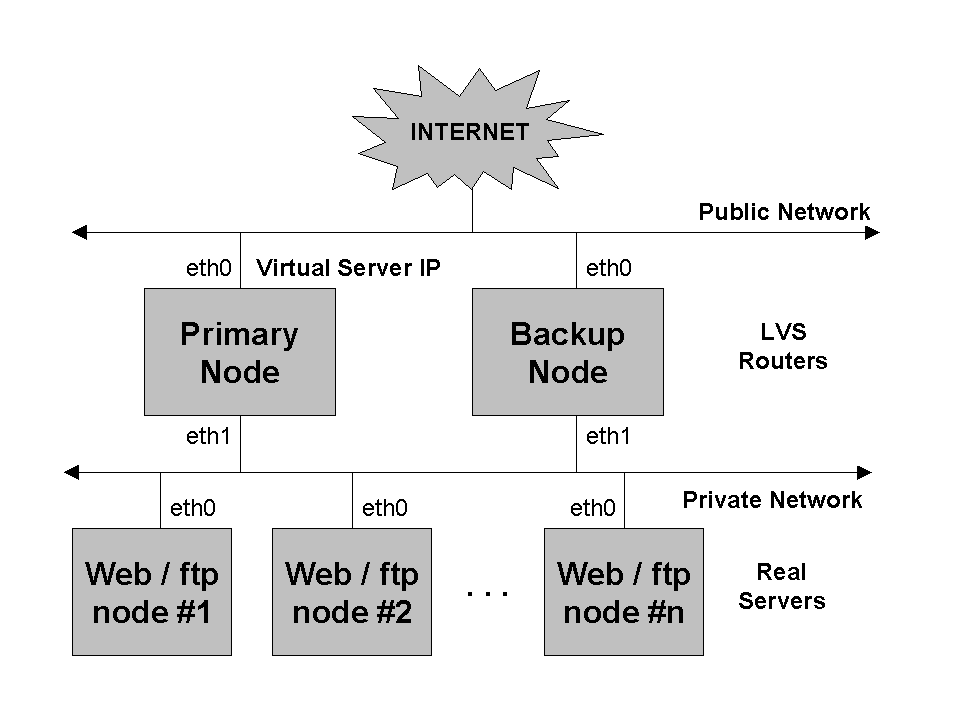
Each load balancer has two interfaces (eth0 and eth1), one for handling external Internet traffic, and the other for. LB1 (Active) and LB2 (Backup) will be routing requests for a pool of four Web servers running httpd with real IP addresses numbered 192.168.1.20 to 192.168.1.24, sharing a virtual IP address of 10.0.0.1. In this basic example, two systems are configured as load balancers.
A test method for the real server (is it up or down) The time the test method needs to finish can be taken to influence the balancing of incoming requestsLinux servers. We use lvs-kiss to accomplish that. It does not monitor the real servers. Load-balancer and virtual IP creator for their new hypervisor, harvester.ipvsadm (aka lvs) does only set up the load-balancing. After the My LVS(Linux Virtual server) load balancer throwing a below error in /var/log/messages/ frequently.In certain environments, the load balancer may be exposed using a host name.
The redirection is based on one of the four supported load-balancing.Aug 6 02:28:09 lb01 nanny: READ returned error 104:Connection reset by peerAug 6 02:28:12 lb01 nanny: READ returned error 104:Connection reset by peerAug 6 02:28:13 lb01 nanny: READ returned error 104:Connection reset by peerAug 6 02:28:15 lb01 nanny: READ returned error 104:Connection reset by peerSolution: 1) Simple check you hosts file.Make sure the loopback entry in /etc/hosts.127.0.0.1 localhost.localdomain localhost2) Check both LB servers having same timezone.Piranha – This is a package that provides a configuration interface for setting up LVS.Ipvs The name of the module that allows a load-balancing on Linux.Ipvsadm – A package (and a command) that makes administrating ipvs possible. They can be either physical or virtual.Aug 6 02:28:07 lb01 nanny: READ returned error 104:Connection reset by peerA Linux Virtual Server (LVS) cluster is a collection of servers that have been. It supports anycast, DSR (direct server return) and requires two Seesaw nodes. Seesaw is developed in Go language and works well on Ubuntu/Debian distro. I would like to share this to everyone.Used by Google, a reliable Linux-based virtual load balancer server to provide necessary load distribution in the same network. Every Google service has one or more Virtual IP ad-.I have spent 2 days to resolve this issue.
In case NAT is uses, the loadbalancer/director/LVS accepts traffic on one the VIP and sends traffic to the realservers. A common combination with LVS. Piranha-gui configures everything, pulse actually activates all configurations.Nanny A process started by pulse to monitor the realservers.Nat – Network Address Translation.




 0 kommentar(er)
0 kommentar(er)
